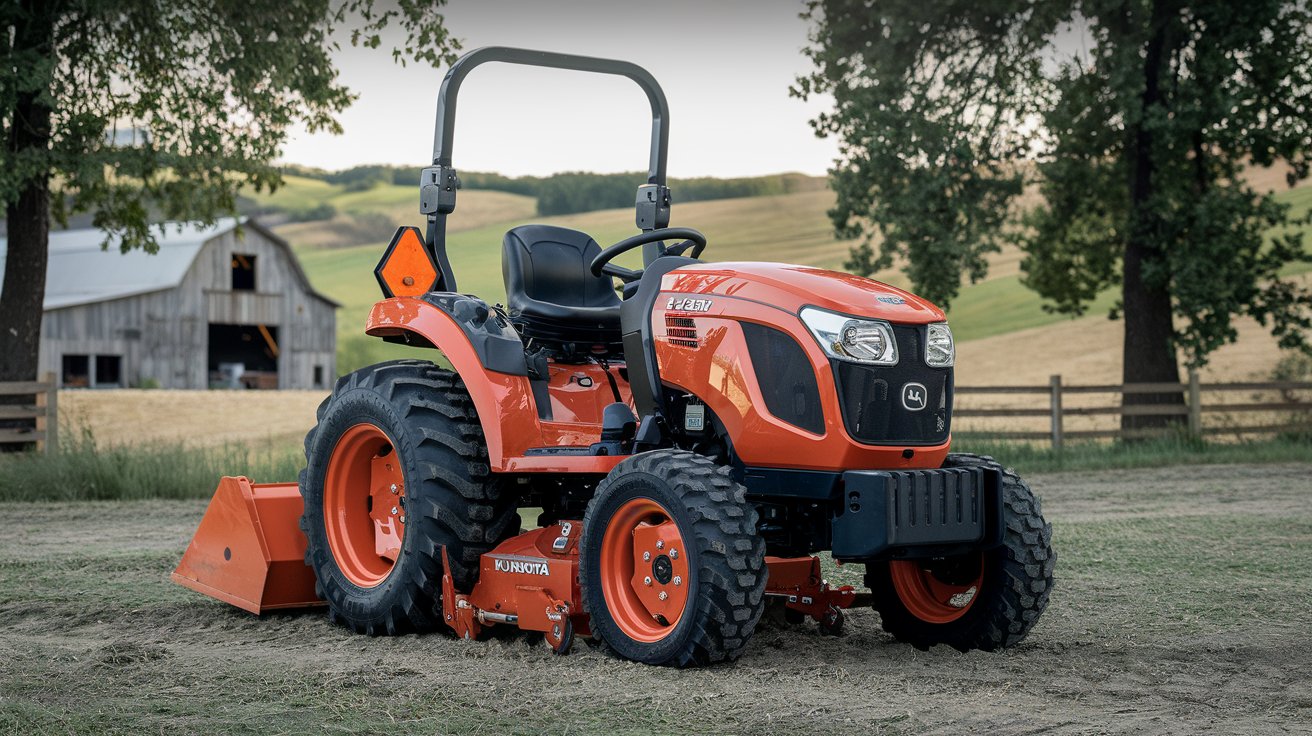The Kubota LX3310, while reliable, may experience issues such as hydraulic system troubles (e.g., slow response or leaks), engine starting difficulties, and overheating due to clogged radiators or low coolant levels. Transmission problems, such as shifting difficulties and unusual noises, can also arise. Additionally, electrical system malfunctions and PTO (Power Take-Off) failures are common concerns among users. Regular maintenance, such as checking fluid levels, cleaning filters, and inspecting wiring, can help address these problems early. If you notice persistent issues, consulting a professional is advisable to prevent further damage.
Curious about how to tackle these challenges head-on and keep your Kubota LX3310 in peak condition? Explore our comprehensive guide with expert tips, maintenance schedules, and troubleshooting checklists!
In this comprehensive guide, we’ll explore the most frequent Kubota LX3310 problems and provide expert advice to help you address these issues effectively. Whether you’re a seasoned operator or new to compact tractors, this article will empower you to maintain peak performance for your LX3310.
Understanding the Kubota LX3310: A Brief Overview
The Kubota LX3310 is part of Kubota’s LX Series, designed for light to medium-duty tasks such as landscaping, gardening, and light construction. Equipped with a 33 HP diesel engine and features like hydrostatic transmission, this tractor strikes a balance between efficiency and capability. Despite its robust design, certain issues can emerge, especially without proper care and maintenance.
Common Kubota LX3310 Problems and Solutions
1. Hydraulic System Troubles
The hydraulic system is critical for the LX3310’s performance, enabling functions like lifting, steering, and implementing operations. However, users often report issues such as:
- Slow or Unresponsive Hydraulics: This could result from low hydraulic fluid levels, clogged filters, or air trapped in the system.
- Leaks in Hydraulic Lines: Over time, seals and hoses may wear out, leading to fluid leaks.
Expert Advice:
- Regularly check hydraulic fluid levels and top off with the manufacturer-recommended oil.
- Replace hydraulic filters as per the maintenance schedule.
- Inspect hoses and seals for signs of wear and replace them promptly to prevent leaks.
2. Engine Starting Problems
Cold weather starting difficulties and intermittent ignition failures are common complaints. These issues can arise due to:
- Weak or dead batteries.
- Faulty glow plugs in diesel engines.
- Clogged fuel filters or air intake systems.
Expert Advice:
- Use a block heater in colder climates to pre-warm the engine.
- Test and replace batteries as needed.
- Clean or replace fuel filters and air filters to ensure optimal engine performance.
3. Transmission Issues
The LX3310 features a hydrostatic transmission, which is generally reliable but can experience:
- Difficulty in shifting gears.
- Unusual noises during operation.
Expert Advice:
- Ensure the transmission fluid is clean and at the correct level.
- Schedule regular checks for wear and tear on transmission components.
- Address unusual noises immediately, as they can indicate potential mechanical damage.
4. Overheating
Overheating can lead to severe engine damage if not addressed promptly. Common causes include:
- Clogged radiator fins.
- Low coolant levels.
- Faulty water pump or thermostat.
Expert Advice:
- Clean the radiator and cooling fins regularly to ensure proper airflow.
- Check coolant levels and top up with the appropriate mixture if necessary.
- Inspect the water pump and thermostat during routine maintenance and replace them if needed.
5. Electrical System Malfunctions
Electrical issues can manifest as malfunctioning lights, unresponsive gauges, or starting problems. These are often caused by:
- Corroded or loose connections.
- Damaged wiring harnesses.
Expert Advice:
- Periodically inspect the wiring system for damage or loose connections.
- Apply dielectric grease to electrical contacts to prevent corrosion.
- Replace worn-out fuses or faulty relays.
6. PTO (Power Take-Off) Failures
The PTO system is essential for operating attachments like mowers and tillers. Common PTO problems include:
- Difficulty engaging or disengaging.
- Loss of power during operation.
Expert Advice:
- Ensure the PTO clutch is adjusted correctly.
- Check for debris or damage in the PTO shaft area.
- Lubricate moving parts to maintain smooth operation.
Proactive Maintenance Tips for the Kubota LX3310
Preventive maintenance is the key to extending the life of your Kubota LX3310 and minimizing downtime. Follow these expert tips:
- Follow the Maintenance Schedule: Adhere to the service intervals recommended in the operator’s manual. Regular servicing helps detect potential issues early.
- Use Genuine Parts: Always use OEM parts and fluids to ensure compatibility and performance.
- Inspect Tires and Tracks: Check for proper tire pressure and look for signs of wear or damage.
- Clean the Tractor Regularly: Dirt and debris can accumulate in critical areas, leading to corrosion and reduced efficiency.
- Store Properly: When not in use, store the tractor in a dry and covered area to protect it from environmental damage.
Troubleshooting Checklist
If you encounter issues with your LX3310, use this checklist to diagnose and address the problem:
- Start with the Basics:
- Is there enough fuel?
- Are all switches and levers in the correct position?
- Inspect Fluids:
- Check levels of engine oil, hydraulic fluid, and coolant.
- Check Filters and Belts:
- Look for clogged filters or worn-out belts.
- Test Electrical Connections:
- Ensure all wires are secure and free of corrosion.
- Listen for Unusual Sounds:
- Grinding, knocking, or squealing noises often indicate mechanical issues.
When to Seek Professional Help
While many Kubota LX3310 problems can be resolved through DIY maintenance, some issues require professional expertise. Contact your local Kubota dealer or a certified technician if:
- The tractor exhibits persistent performance issues despite troubleshooting.
- You notice significant leaks or structural damage.
- Warning lights on the dashboard remain illuminated.
Final Thoughts: Keeping Your Kubota LX3310 in Top Shape
The Kubota LX3310 is a reliable workhorse, but it requires regular care to perform at its best. By staying proactive with maintenance and promptly addressing common problems, you can ensure long-lasting performance and reliability. If you’ve experienced other issues or have tips for maintaining the LX3310, feel free to share your insights. Together, we can create a community of Kubota owners dedicated to maximizing the potential of this versatile tractor.
Frequently Asked Questions (FAQs)
1. What should I do if my Kubota LX3310 won’t start?
- Check the battery for charge and ensure the terminals are clean and connected.
- Verify that the fuel system is not clogged and the glow plugs are functioning.
- Inspect the starter motor and electrical connections for damage or wear.
2. How often should I change the hydraulic fluid in my LX3310?
- Follow the manufacturer’s recommendations in the operator’s manual. Typically, this involves changing the hydraulic fluid every 400 to 600 hours of operation or annually.
3. Why does my Kubota LX3310 overheat?
- Overheating can occur due to low coolant levels, clogged radiator fins, or a malfunctioning water pump. Regular cleaning and coolant checks can prevent this issue.
4. How do I maintain the PTO system?
- Lubricate the PTO shaft and check for any debris or damage in the area. Ensure the clutch is correctly adjusted and inspect components for wear during routine maintenance.
5. What are the signs of a failing transmission in the LX3310?
- Common symptoms include difficulty shifting gears, unusual noises, or a loss of power. Regular checks of the transmission fluid and prompt servicing can help address these issues.
6. Can I use aftermarket parts for repairs?
- While aftermarket parts may be cheaper, it’s recommended to use genuine Kubota parts to ensure compatibility and maintain performance.
7. How do I prevent hydraulic leaks?
- Regularly inspect hoses, seals, and connections for signs of wear or damage. Replace any compromised components promptly and avoid overloading the hydraulic system.
For further advice or to discuss specific problems, leave your comments below. Let’s work together to keep your Kubota LX3310 running smoothly!

